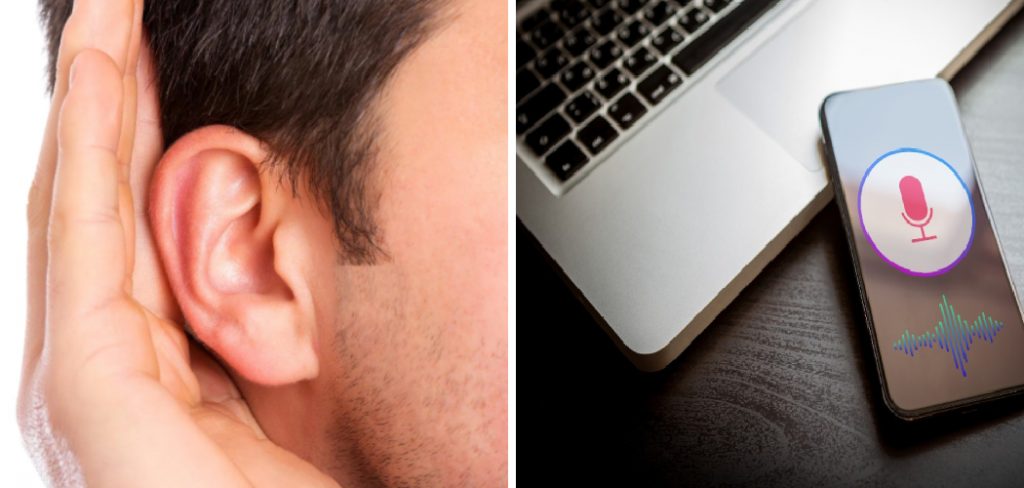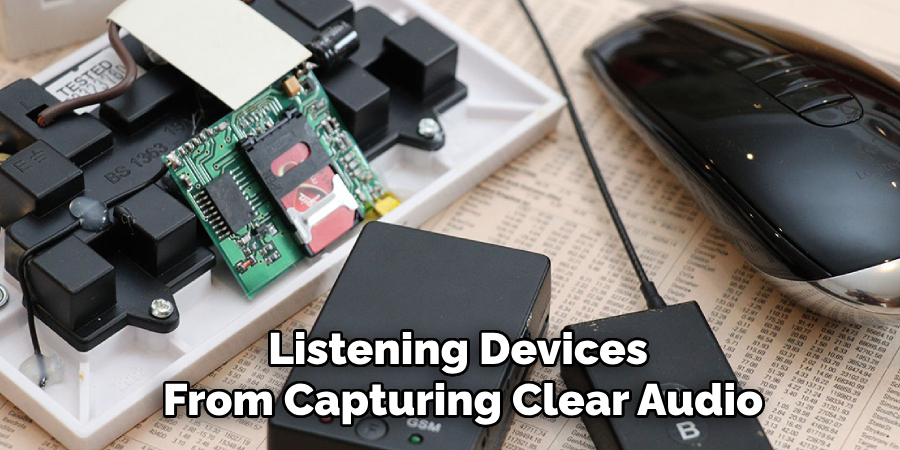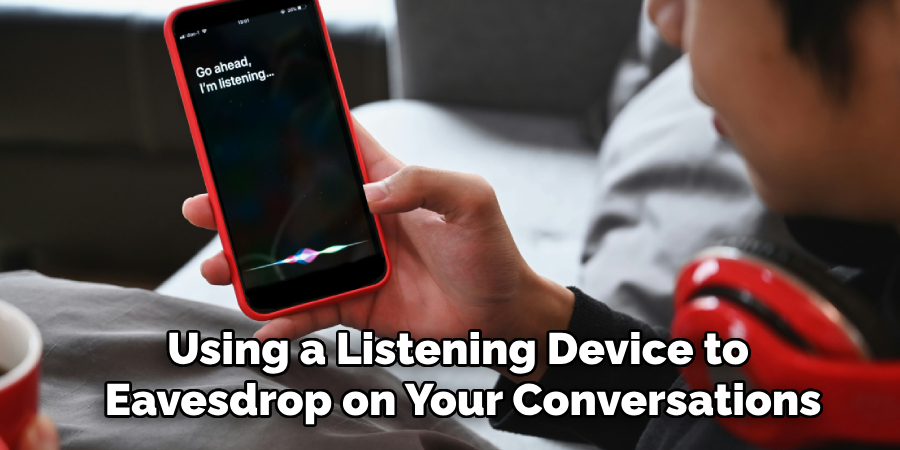Stopping a neighbor’s listening device can be a concerning issue, especially in terms of privacy and security. Whether you suspect unauthorized surveillance or simply want to ensure your conversations remain private, addressing this issue requires careful steps. Listening devices can vary from simple microphones to more sophisticated equipment, making detection and removal challenging.

Understanding how to identify and counteract such devices involves knowing where and how to look for them, utilizing detection tools if necessary, and taking appropriate legal steps if privacy laws are violated. This guide will outline practical methods for how to stop neighbor listening device, emphasizing privacy rights and ensuring peace of mind in your own home environment. By following these steps, you can protect your privacy and take proactive measures against unauthorized surveillance.
Understanding Listening Devices
Listening devices come in various forms and can be hidden in plain sight, making them difficult to detect. They range from simple, easily obtainable devices, such as mini microphones and recording devices, to more advanced gadgets like radio frequency (RF) transmitters and laser microphones. Mini microphones can be planted inconspicuously in household items, while RF transmitters send audio signals to a remote location, making real-time eavesdropping possible.

Laser microphones can even capture conversations from a distance by detecting sound vibrations from objects. Understanding the types of listening devices and their functionalities is crucial for identifying potential threats to your privacy.
Types of Listening Devices
1. Mini Microphones and Audio Bugs
Mini microphones, often referred to as audio bugs, are among the most commonly used listening devices. These tiny gadgets can be easily hidden in everyday household items such as picture frames, lamps, or smoke detectors. They are often battery-powered and can record conversations for extended periods. Some advanced versions can even transmit audio wirelessly to a nearby receiver.
2. RF Transmitters
Radio Frequency (RF) transmitters are sophisticated listening devices that can send audio signals to a remote receiver in real-time. These devices can be hidden within electronic items or behind walls and are capable of picking up conversations from a considerable distance. The transmitted signals can be received through a base station or mobile device, allowing for discreet eavesdropping.
3. Laser Microphones
Laser microphones are highly advanced devices that can capture sound from a distance by detecting vibrations on surfaces, such as windows. By aiming a laser beam at a reflective surface near the conversation, the device measures the vibrations caused by sound waves and converts them back into audio signals. This technology allows eavesdropping from outside the premises without the need for physical presence inside the target area.
4. GSM Bugs
GSM (Global System for Mobile Communications) bugs leverage cellular networks to monitor conversations. These devices contain a SIM card and can function like a mobile phone. When activated, they call a pre-set number and transmit the surrounding audio directly to the listener. GSM bugs can be concealed in various objects and can be operated remotely, making them a popular choice for covert surveillance.

5. Digital Voice Recorders
Digital voice recorders are compact devices that can store hours of audio data. They are relatively inexpensive and can be easily purchased from electronic retail stores. These recorders are typically used for passive surveillance, where the recorded conversations are retrieved later. They can be hidden in a variety of locations due to their small size and portability.
10 Methods How to Stop Neighbor Listening Device
1. Identifying the Signs of a Listening Device
Before you can stop a neighbor’s listening device, you need to identify the signs that one might be in use. Common indicators include unexplained static or buzzing sounds during phone calls, unusually high levels of noise on your radio or television, or finding unfamiliar electronic devices or wires in your home. You might also notice strange behavior from your neighbor, such as reacting to conversations they shouldn’t have knowledge of. Recognizing these signs is the first step in taking appropriate action to protect your privacy.
2. Conducting a Physical Sweep
Conducting a physical sweep of your home can help you locate any hidden listening devices. Start by inspecting common hiding places such as light fixtures, smoke detectors, electrical outlets, and furniture. Use a flashlight to check for small holes or unusual objects that could house a microphone or recording device. Pay special attention to rooms where you frequently have private conversations. If you find any suspicious devices, do not touch or move them immediately. Document their location and appearance, and consider contacting law enforcement for further assistance.
3. Using a Radio Frequency (RF) Detector
A Radio Frequency (RF) detector is a useful tool for identifying hidden listening devices. These devices detect the radio frequencies emitted by wireless microphones and transmitters. To use an RF detector, turn it on and slowly scan the room, paying attention to any areas where the detector indicates a signal. Move methodically through each room, checking around electronics, light fixtures, and furniture. If the detector picks up a signal, it’s likely that a listening device is present. RF detectors can help you locate wireless devices that might be difficult to find through a physical sweep alone.
4. Employing Audio Jammers
Audio jammers are devices designed to disrupt and block the transmission of audio signals from listening devices. These jammers emit a range of sound frequencies that interfere with the operation of microphones and recording devices. To use an audio jammer, place it in the room where you suspect eavesdropping is occurring and turn it on. The jammer will create background noise that makes it difficult for listening devices to capture clear audio. While audio jammers can be effective, they may also interfere with other electronic devices, so use them with caution.
5. Soundproofing Your Home
Soundproofing your home can help prevent your conversations from being overheard by listening devices. Start by sealing gaps around doors and windows with weatherstripping or acoustic sealant. Add thick curtains or drapes to windows to absorb sound. Consider installing acoustic panels or foam on the walls to reduce noise transmission. Carpets and rugs can also help dampen sound. By reducing the amount of sound that escapes from your home, you can make it more difficult for listening devices to pick up your conversations.
6. Creating Background Noise
Creating background noise is an effective way to mask your conversations and prevent listening devices from capturing clear audio. Use white noise machines, fans, or even a television or radio set to a non-distracting volume. The background noise should be loud enough to cover your conversation but not so loud that it becomes disruptive. This method is particularly useful when discussing sensitive information. Background noise makes it challenging for eavesdroppers to distinguish individual voices and understand the content of your conversations.

7. Encrypting Digital Communications
If you suspect that your neighbor is eavesdropping on your digital communications, such as phone calls or online chats, encrypting your data can provide additional protection. Use encrypted messaging apps like Signal or WhatsApp for text and voice communication. For emails, consider using encryption tools like PGP (Pretty Good Privacy) to secure your messages. Encrypting your digital communications ensures that even if they are intercepted, the content remains unreadable without the decryption key.
8. Securing Your Wireless Network
Securing your wireless network can prevent neighbors from accessing your internet connection and potentially using it to eavesdrop on your communications. Start by changing the default username and password of your Wi-Fi router. Use a strong, unique password that includes a mix of letters, numbers, and symbols. Enable WPA3 encryption, which offers better security than previous encryption standards. Regularly update your router’s firmware to protect against vulnerabilities. A secure wireless network helps prevent unauthorized access and enhances your overall privacy.
9. Consulting with a Professional
If you are unable to locate or stop a listening device on your own, consulting with a professional can provide additional assistance. Private investigators and security experts have specialized equipment and expertise in detecting and neutralizing surveillance devices. They can conduct thorough sweeps of your home, identify potential threats, and recommend specific measures to enhance your privacy. While professional services can be costly, they offer a higher level of assurance and can address complex surveillance issues effectively.
10. Legal Actions and Precautions
If you have concrete evidence that your neighbor is using a listening device to eavesdrop on your conversations, you may need to take legal action. Start by documenting all suspicious activities and any devices you find. Contact law enforcement to report your concerns and provide any evidence you have gathered. In some jurisdictions, eavesdropping and the use of listening devices without consent are illegal and can result in criminal charges. Additionally, consult with a lawyer to understand your rights and the legal steps you can take to protect your privacy and hold the responsible party accountable.

Conclusion
In conclusion, stopping a neighbor’s listening device involves a combination of vigilance, technology, and legal measures. Identifying the signs of a listening device, conducting physical sweeps, and using RF detectors are crucial first steps. Employing audio jammers, soundproofing your home, and creating background noise can effectively disrupt eavesdropping efforts.
Encrypting digital communications and securing your wireless network provide additional layers of protection. Consulting with professionals and taking legal action, if necessary, ensure comprehensive protection of your privacy. Thanks for reading, and we hope this has given you some inspiration on how to stop neighbor listening device!
About
Safety Fic is a distinguished figure in the world of Diy design, with a decade of expertise creating innovative and sustainable Diy solutions. His professional focus lies in merging traditional craftsmanship with modern manufacturing techniques, fostering designs that are both practical and environmentally conscious. As the author of diy, Safety Fic delves into the art and science of Safety Fic-making, inspiring artisans and industry professionals alike.
Education RMIT University
(Melbourne, Australia) Associate Degree in Design (Safety Fic) Focus on sustainable design, industry-driven projects, and practical craftsmanship. Gained hands-on experience with traditional and digital manufacturing tools, such as CAD and CNC software.
Nottingham Trent University
(United Kingdom) Bachelor’s in diyfastly.com and Product Design (Honors) Specialized in product design with a focus on blending creativity with production techniques. Participated in industry projects, working with companies like John Lewis and Vitsoe to gain real-world insights.
Publications and Impact
In diy, Safety Fic his insights on indoor design processes, materials, and strategies for efficient production. His writing bridges the gap between artisan knowledge and modern industry needs, making it a must-read for both budding designers and seasoned professionals.
